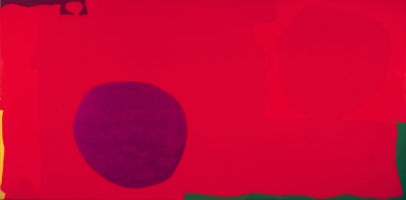
ST. IVES, UK – Acclaimed British artist Patrick Heron (1920-1999) will be celebrated in a retrospective exhibition at Tate St. Ives, the first major show of his work for 20 years. One of the most significant and innovative figures in 20th-century British art, Heron played a major role in the development of postwar abstract art.
This exhibition – spanning over 50 years of work from 1943 to 1996 – provides a rare opportunity to experience the scope and ambitious scale of Heron’s painting as well as his consistent attachment to the subject of color. In 1962 he explicitly claimed that “color is both the subject and the means; the form and the content; the image and the meaning, in my painting today.”
Heron’s abstraction is a direct response to the light, color and shape that he encountered every day. An art of pure visual sensation, his paintings are the result of his experience of looking acutely at the world and though they do not represent the garden and landscape surrounding his home and studio in Cornwall, those forms resonate in his painting in fundamental ways.
The exhibition in the new top-lit gallery at Tate St. Ives is the first opportunity to bring together a group of these large-scale expansive works to Cornwall, reveal the full evolution of his vibrant abstract language, unlock new insights into his art and encourage the viewer – immersed in the rich aesthetic sensibility of his color-saturated paintings – to enjoy the simple and joyous act of looking.
An artist and a critic, Heron was central to debates in contemporary art since the 1940s. His recognition of the power of American abstract painting of the 1950s and 1960s was tempered by his unwavering attachment to the cultural values of European art found in the work of the French modern masters Paul Cézanne, Henri Matisse, Georges Braque and Pierre Bonnard, as much as his contemporaries such as Nicolas de Staël and Pierre Soulages, Peter Lanyon or William Scott. As an art critic in the 1950s for the American art magazine Arts, he introduced American readers to developments within British art as well as offering a European perspective on American art.
Born in Leeds, Heron spent his early childhood in Cornwall, returning regularly after the mid-1940s – moving permanently to Zennor, west Cornwall in 1956. He was foremost a painter, however, during his career, he worked in a variety of media, from the silk scarves he designed for his father’s company, Cresta, from the age of 14 to a stained-glass window for Tate St. Ives.
The Patrick Heron retrospective, which brings together 45 paintings, including rarely seen works from private collections around the world, is accompanied by a fully illustrated catalog from Tate Publishing.


